
Please note: this post may contain affiliate links. If you purchase something by clicking the links, I will get a small compensation, at no extra cost to you.
Istanbul is the 15th largest city in the world spanning both Europe and Asia! It’s been the center of civilization for thousands of years because of its central location. Needless to say, a trip to Istanbul can be a bit overwhelming as there’s so much to see and do including visiting culturally and historically important sites, tasting all the incredible food, and discovering what truly make Istanbul special.
If you only have 3 days in Istanbul, you might be worried that you don’t have enough time to experience the city. However, that isn’t the case! Istanbul in 3 days is certainly doable and with my 3 day Istanbul itinerary, I know you’ll walk away feeling content, impressed, and perhaps a bit joyfully exhausted (there’s thousands of years of history to cover after all).

Map of your 3 day itinerary for Istanbul
3 Day Istanbul Itinerary
Before we dive into the itinerary, I just had to let you know that I’ve created a free downloadable version that has the map and all tram stops, so you can get around the easiest! Just tell me where to send it.
Day 1 — A cultural discovery of Istanbul
Feast upon this
To start off, I can’t recommend this food tour of Istanbul enough as your first thing to do. Not only will you try incredible food, but you’ll get acquainted with the city in terms of navigation, neighborhoods, and most importantly discover what foods you need more of during your trip!
While there are many incredible food tours of Istanbul, I’m confident that the one I went on is one of the best. It was called the Taste of Two Continents tour and was a 6 hour tour that covered Fatih on the European side and Kadıköy on the Asian side.
Starting off with breakfast, we had a traditional full spread of Turkish breakfast items including olives, cheeses, simit (my new favorite seasame bagel type food), hazelnut paste, sausages and meats, menemen (Turkish scrambled eggs with tomato), and of course, Turkish tea (aka chai). YUM.

Next, we walked to the Egypian Spice Bazaar to tour it a bit, find out the best spot to buy authentic Turkish coffee, and top off our breakfast with second breakfast (the hobbit in me was LIVING for this tour), which was beyran, a lamb soup that was quickly everyone’s favorite!
I’ve been on quite a few food tours and this felt like a natural stopping point, but thankfully this tour was just getting started with so much more coming!

We hopped on the ferry to the Asian side of Istanbul (Kadıköy). A side note here that this was so wonderful to be able to do with a tour guide for the first time. Public transportation in Istanbul was plentiful almost to the point of overwhelm for first time visitors, but on this tour, you’ll learn the ropes with a local!

In Kadıköy, we had Iskander kebab, a type of shaved kebab over the most delicious bread with a side of Turkish yogurt. We also tried pickle juice and pickled veggies, Nutella cookies, baklava with Turkish ice cream, and lokma (a donut adjacent street food).

Finally, we got to sit down at a restaurant Çiya Sofrası, which is helmed by a famous Turkish chef, Musa Dağdeviren, who specializes in traditional Turkish recipes from around the entire country to bring more “home” cooking back into the big city. Everything we tried was seriously so flavorful with combinations you could only dream of like pear marinated lamb.
Anyway, if I haven’t convinced you by now, I truly only have wonderful things to say about this tour. I highly highly recommend doing it first thing!
When the tour ends, you’ll be properly stuffed and probably a bit tired. Your guide will help you take the ferry to wherever you’re trying to go.

A small but interesting museum
While you can fit in something else this afternoon, you may want some time to rest before this evening’s activity. The tour ends around 3:30 pm so it’s up to you!
If you want to fill the afternoon with an activity, I have a slightly offbeat pick for you that’s near tonight’s Whirling Dervish activity. At Sırkecı Station on tram line 1, you’ll find a small free museum – Istanbul Railway Museum.

It’s located in the Sırkecı Train Station and has lots of artifacts from trains that played a huge role in Turkey’s history and position as the center of the world. One of the most popular collections is that of The Orient Express which ended at Sırkecı Train Station.
Not only is the museum free, but there is a free audio guide that you can access via your phone. Be sure to bring headphones!
Istanbul Railway Museum only takes about 30 – 45 minutes to experience, so it’s a great filler activity. Just be aware that they close at 5 pm daily.

Dinner and a show (or a show then dinner)
If you’re somehow hungry for dinner before your Whirling Dirvishes show, around the corner is a collection of restaurants nestled in some smaller streets (this is also where the Hodjapasha Cultural Center is that the show takes place in).
We were absolutely still full from the tour, but if I was hungry in the area, I probably would have gone with Sırkecı Sultan Restaurant, which has 4.8 stars out of over 1K reviews on Google! You’ll find the more common doner kebab here.
Be sure to leave yourself at least 30 minutes prior to your Whirling Dervishes show to arrive at Hodjapasha Cultural Center. Inside, they have restrooms and a lobby, which has a museum to help you learn about the religious ceremony you are about to witness.
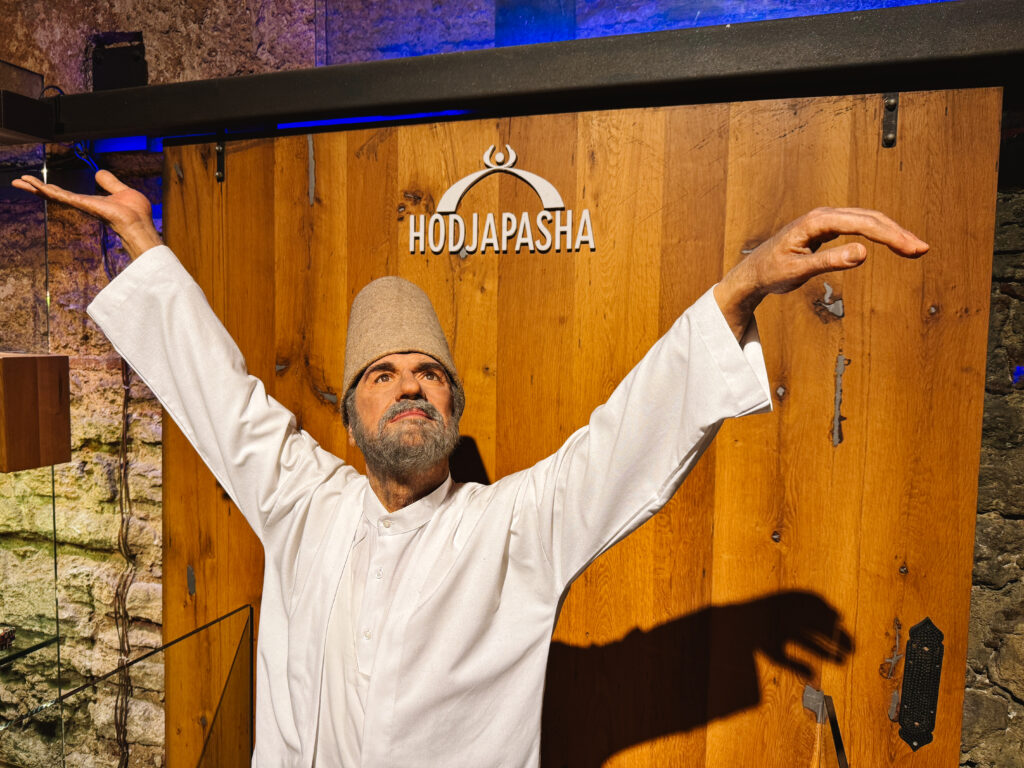
The signs are not only helpful, but truly necessary to get the most out of the experience as there is no guided explanation during the ceremony. Be sure to use the restroom before the ceremony as it’s tricky and frowned upon to leave during the show.
The Mevlevi Sema Ceremony takes about an hour and comprises seven parts that include the mutrip (a band of flutists, drummers, chanters, and a choir) and dervishes. The whirling occurs in parts 4 and 5 and lasts about 20 – 30 minutes of the ceremony.

Overall, I think this is a worthwhile experience (hence me recommending it on this itinerary), but I also think that the context learned in the museum is absolutely necessary. It’s also not a show for entertainment, but a religious ceremony. That said, I’m not sure kids would find it particularly captivating as it can be repetitive and slow. Again, it’s not occurring for your entertainment.
To end your night should you find yourself desiring second dinner (or first dinner), I’ll share what we did for better or worse.
We sought out balik ekmek – a Turkish fish sandwich made on or near swaying restaurant boats on the Bosphorus. Now, I don’t know if we picked a not-so-great shop for these sandwiches or what, but we were not fans. I love fish, but these were so dang fishy tasting that I felt like I opened my mouth in the water itself.
The sandwich is made of a fish filet, onions, and lettuce and you can add lemon juice on your table. Pro – they only cost 100 TL each (~ $3.40). Con (and maybe TMI, sorry in advance) – our burps for the remainder of the night were straight FISH no matter how much gum, teeth brushing, or mouthwash we attempted.
If you love fish and want to try it, I won’t say it was a bad sandwich, it just wasn’t for us. Give it a go! It’s certainly a (nicely affordable) rite of passage if nothing else!
We went to Tarihi Eminönü, but I’ve heard going across the bridge to Karaköy or even along the bridge can be better!

Day 2 – Historic classics
Today is all about the classics. The reason people come to Istanbul. We’re tackling the icons of Sultanahmet Square – Hagia Sophia, Blue Mosque, Topkapı Palace, and right across the street: the Basilica Cistern.
Before we dive into Day 2’s itinerary, I want to preface this section with a little info. Hagia Sophia and Blue Mosque are active mosques, meaning they adhere to Muslim prayer times. That means that throughout the day, they close to the public a number of times.
While they do have signs up at each mosque, I found that this website was helpful in planning out when we could expect prayer times. You can expect the mosques to close for 30 minute windows around prayer time.
That said, if you need to switch the items on today’s itinerary around to accommodate prayer time closures, feel free!

Breakfast at your hotel
While breakfast is plentiful in Istanbul, I recommend eating at your hotel’s breakfast, especially if it’s included. Each hotel we stayed at (all 3) had lavish breakfast buffets because they take breakfast so seriously here!
Fill up before heading out for the day and save your budget for other goodies.
For reference, we would eat such large breakfasts that we could get by on smaller lunches then a bigger dinner, which is what we were told most Turks do!
Topkapı Palace
We began our morning at Topkapı Palace and I’m so glad we did because it was less crowded. If there’s one thing about Istanbul, it’s that it is a very popular travel destination. We visited in off season (winter) but still got super peopled out by mid-day. Just introvert things amirite?
Topkapı Palace was the former residence of the sultan and the administrative hub of the Ottoman Empire…casually. Now, it’s a museum that you can visit.
About 30 sultans ruled from Topkapı Palace during the 600 years of the Ottoman Empire starting with Mehmed II in the 1450s. The palace was expanded by each successive sultan and features four courtyards that served various purposes and subsequently restricted access.

There are a couple sections that will dictate which tickets you need to buy – Topkapı Palace, Harem, and Hagia Irene. You either get a ticket with or without access to the Harem. It’s a difference of 200 TL or ~ $7 and having done the Harem add on, I do think it’s worth it and here’s why.
The Harem is the only way to see the parts of the palace that were lived in. You’ll see the Sultan’s living spaces, as well as that of his mother, concubines, eunuchs, and courtiers. The opulence of these spaces are incredible with tortoise shell and mother-of-pearl inlaid doors, the Sultan’s gold plated throne, and mosaics like you won’t believe.

Without accessing the Harem, you’re limited to the museum exhibits, which in their own right are amazing. However, the Harem really gives you an inside look into what daily life looked like for those living at the Palace.
Beyond the Harem, the exhibits are fascinating and truly represent the great wealth of the Ottoman Empire. Our favorite that blew our mind was that of the Holy Relics, which included super casual artifacts like Moses’s staff, John the Baptist’s skull bone, and Prophet Mohammad’s mantle, sandals and beard hair (seriously, so much beard hair saved and stored in lavish gold boxes).

The exhibits in the courtyard also feature collections of jewels, including the Spoonmaker’s Diamond, one of the largest in the world, palace items like the most lavish ice cream dishes, military technology like armor and weapons, and clothing items worn by the sultan, his wives, and his children.
The Library of Sultan Ahmed III is also worth visiting in the center of the third courtyard!

While we were feeling burnt out at this point, you can also visit Hagia Irene, which is near the front of Topkapı Palace. It’s the oldest known church in Istanbul and the only Byzantine church that was never converted to a mosque. This is because it was used to store weapons for centuries!

While you can opt for a guided tour of Topkapı Palace, I don’t think it’s necessary. This is because many museums in Istanbul participate in a free audio guide app that’s easy to use. Remember to bring headphones with you and you can scan the QR code on signs near the entrance to access the information.
Here are some options for guided tours if you’re interested!
There are also physical audio guides, but you’ll need to surrender your passport in exchange to guarantee you return it. I preferred to stick with the audio guide on my phone but it’s up to you!

Hagia Sophia and the Blue Mosque
Before we move on to the next activity, I want to share what I think could have improved our Hagia Sophia and Blue Mosque experience. That’s a guided tour.
While you certainly can go in by yourself, grab a pamphlet, and make your own observations, I’m sure a tour guide would have provided much more historical context and information to enhance these experiences.
I recommend signing up for a tour ahead of time on trusted sites like Get Your Guide, rather than showing up the day of and paying someone lingering outside the doors (because yes they’re around and give off some scammy vibes).
If I could go back, I’d definitely sign up for a tour instead. The reason I didn’t aside from our budget, was that on the outside in my planning phase, it seemed like tours were designed to help you “skip the line,” which felt silly in off season. We didn’t have any trouble with lines at all, so I opted for self-exploration.
Anyway, learn from me and if you’re interested in history and making the most out of these two mosques, book a tour ahead of time.
That said, after Topkapı Palace, let’s visit Hagia Sophia and the Blue Mosque. They are all situated right next to each other in Sultanahmet Square so you can easily walk from one to the next.
If you’re feeling peckish, I recommend grabbing some simit from one of the carts populated in the square. You can also get them with cheese or nutella for an even more filling snack.
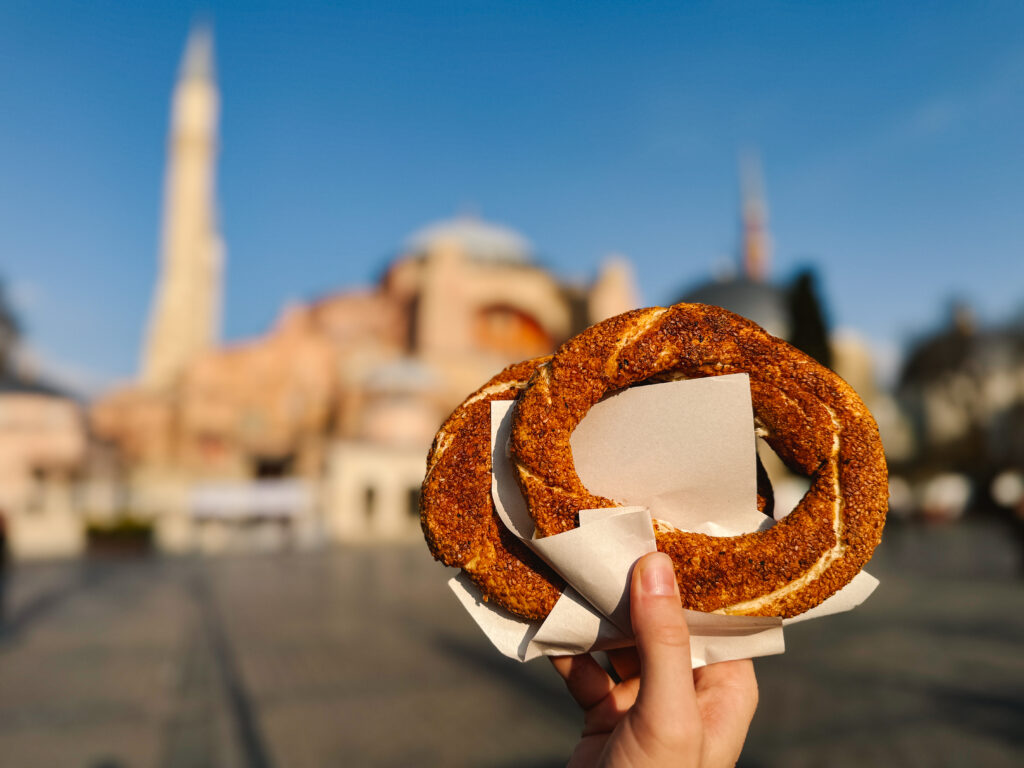
Hagia Sophia was built in the 6th century under direction from Justinian I, the Byzantine emperor. It’s one of the most iconic monuments in the world and has been a church, mosque, museum, and recently a mosque again.
One of the most interesting parts of visiting Hagia Sophia is that you really can see its alternating history in the architecture and art found throughout. For example, you’ll find historic mosaics that depict the Virgin Mary and Christ as well as the massive calligraphic roundels that bear the names of Allah and Mohammed in Arabic.

When you’re inside, spot the marble Omphalion on the floor, where Byzantine emperors may have been coronated, visit the Sultans’ Tombs, and find the Wishing/Weeping Column that leaks what are said to be the tears of Virgin Mary.

Make your way to the Blue Mosque, which was built in the early 1600s. This mosque is known for its ornate blue mosaics and tiles inside that are absolutely stunning.
One of the details I was hoping to see, but couldn’t find (again a tour would have been helpful) was the iron chain over the entrance that forced those who entered on horses to bend their heads, which in turn forced the respect of all who entered…even the sultan himself.

If you aren’t on a tour, you can visit both mosques in about an hour and a half total including the walking time between them. Again, make sure you are heeding prayer times. Given they are only 30-minute windows, you can always grab some street food, sit in the square, and wait it out. It’s truly something to hear the call to prayer from such iconic mosques.

Basilica Cistern
Next up is the Basilica Cistern, which is one of hundreds of ancient cisterns in Istanbul that lie under the city.
It was built in the 6th century by Emperor Justinian and operated by distributing water collected from rain and historic waterways like Hadrian’s Pipeline. It provided water to Topkapı Palace.
It’s also an architectural marvel with 224 steps and 336 Roman columns including some notable ones, which I’ll share in a bit, and was over 60,000 square feet in size!

A note for my budget travelers, you want to be sure to visit Basilica Cistern before 6:30 pm as the price of tickets increases from 450 TL to 1000 TL per person…that’s an increase of $18! No thank you.
It takes about 30-45 minutes to go through the Basilica Cistern. Be sure to read the signs at the beginning to learn about what you’re seeing as there are not many signs throughout the walkways as you go forward. Similar to other historic sites, you can take a guided tour of Basilica Cistern if you want more information.
You’ll also spot modern art installations sprinkled throughout like light up jellyfish and Medusa (wait for her epic shadow as the lights change).

Be sure to find the notable columns including the medusa heads (near the Medusa sculpture), which are thought to have been added to watch over the cistern. An alternative theory is that they were simply discarded and repurposed Roman materials and they just fit under the columns.

Another special column is the Hen’s Eye column, which is thought to be a tribute to the fallen slaves who helped built the Basilica Cistern.

Lunch/Dinner in Gülhane Park
By now I imagine you’re properly hungry and I have a restaurant recommendation for you. It was full of locals when we went and located in Gülhane Park, which provided a nice ambiance. It’s called Gülhane Parkı Kandil Kafe and it’s along the lefthand side of the park.
The menu is large and while you might be tempted by recognizable foods like burgers, I urge you try their manti, a type of Turkish dumpling. These tiny little pieces of heaven have a flavorful meat filling and sauce and are served over Turkish yogurt for an unlikely delicious pairing.

Choose your own adventure: museum edition
Once you’re fueled up, I have one more activity for you today if you have the energy. If not, no harm done. It’s important to rest up as tomorrow is just as packed as today!
If you’re feeling up for it, make your way to either the Istanbul Archaeological Museum just across the park or the Islamic Science and Technology History Museum just north of the restaurant along the park.
Both of these museums are great choices, but it’s really what you’re interested in. We did both as we had an extra day in the city, so here’s some insight if you’re having trouble choosing.
The Istanbul Archaeological Museums are comprised of The Archaeology Museum, The Museum of the Ancient Orient (currently closed for renovations), and The Tiled Kiosk Museum (also currently closed for renovations). Some highlights include Alexander the Great’s sarcophagus, the first ever minted coins in civilization, and some incredibly old artifacts dating to the 14th century B.C.E.
Tickets are 350 TL and include all three museums when they’re open. It took us about an hour and a half to go through the Archaeology Museum alone.

The Islamic Science and Technology History Museum covers exactly that – developments and discoveries in a wide range of scientific fields made by Arabic scientists. As a scientist myself, I loved this museum!
The purpose was to really highlight these historic discoveries that have been hidden or ignored by the modern world due to prejudices of modern political climates. Inside the museum, you’ll see astrolabes, the most fascinating clocks including a water clock, chandelier clock, and candle clock, a collection of medieval weapon models, and so much more. This place was fascinating!
Tickets were 210 TL per person and it takes about an hour to go through.

If you’re deciding which to choose, I personally felt (and my scientist heart may be biased) that the Science and Technology History Museum had one of a kind exhibits that you won’t see anywhere else. After going through Topkapı Palace, I felt that I had a decent fill of ancient and Ottoman artifacts, so I liked how different the science museum was. However the Archaeological Museums span much more history and more civilizations than you’ll find in Topkapı Palace, so if that’s your cup of tea, it’s worth it!
Also worth noting that both museums close at 6:30 pm in the winter (October 31 – April 1) and 8 pm in the summer (April 1 – October 31).

Bosphorus Dinner Cruise
Depending on when you last ate and when you like to take dinner, you may be looking for another meal. I’ve heard great things about Bosphorus dinner cruises. They obviously come with dinner and you’ll see some amazing night views of the city from the water. Some even have accompanying shows.
Day 3 – Taking it in
Today is for shopping (or window shopping), taking in some final views of the city, and relaxing in a Turkish hammam.
Grand Bazaar
After another hotel breakfast, start your morning off at the Grand Bazaar. It’s one of the oldest and largest covered markets in the whole world where there are over 60 streets sprawled out over 320,000 square feet! There are over 4,000 shops with 20+ entrances.
When I was first reading about the size of the Grand Bazaar I was seriously anxious about navigating it and finding my way out once I got in. Let me be the one to ease those worries. When in doubt, pick a direction and stick to it, you’ll reach an end eventually. If there’s no entrance/exit there, go a block up one at a time until you find your way out.
I promise it’s not as intimidating as it may seem.

Once inside, you’ll find everything from luggage to rugs to lamps to spices and more. If you want to shop, this may not be the most inexpensive place to do it because vendors know it’s such a tourist hotspot. However, haggling can be helpful and if you’re like girl, who even knows how to do that or has the confidence. Yeah, I felt the same and still do.
The one sure way I found to get them to lower the price was to ask for a cash discount. They always lowered the price, and you don’t have to attempt haggling beyond that if you don’t want to. Although they likely would go lower, that was enough for me.

Spice Bazaar (aka Egyptian Bazaar) and lunch
Because they’re right next to each other, I also recommend revisiting the Spice Bazaar that you may have visited if you went on my recommended food tour. This time you can go slow and if you’re looking for more foodie items, this will be a better spot!
Ultimately, I bought everything from the Spice Bazaar. I got a tea set and tea, Turkish coffee (Kurukahveci Mehmet Efendi is an authentic spot just outside the right hall of the Spice Bazaar), my new favorite hazelnut paste, and two pashmina scarves. If you are buying anything fragile or perishable every shop in the Spice Bazaar has a vacuum sealer and wrap so your items stay fresh and safe when traveling.

At this point, we returned to Lezzet i Şark for their beyran (that incredible lamp soup from the food tour). You can walk this alleyway to find somewhere new or try something else on their menu, if you prefer.
Galata Tower
Make your way across the bridge to Galata Tower. You can easily take the tram from Eminönü Station outside the Spice Bazaar to Karaköy Station across the bridge then walk ~ 10 minutes to the tower.
This is a 9-story tower that was once a fire watchtower in the 14th century. Now, it’s a museum space, but the highlight is really the view from the tower as you can see the Istanbul skyline beautifully!
Unfortunately, a week before we arrived in Istanbul a windstorm came through and wrecked the roof of Galata Tower so there was scaffolding to support the restoration efforts. Because of that, we opted not to visit the tower as access to the observation level was restricted.
Assuming it’s fixed when you visit, I’ve heard nothing but great things!

Experience a Turkish hammam
Now that we’re over on this side of the water (specifically, the Golden Horn), it’s time to unwind at a hammam, a Turkish bathhouse and spa. There are a TON of hammams all over the city, but the one that claims to be the first ever hammam in Istanbul having been built in 1454 is Ağa Hamamı.
It’s a 22 minute walk from Galata Tower, or you can walk back down to Karaköy Station and take it one stop to Tophane Station. From there it’s only a 15 minute walk.
Note that this side of Istanbul is very hilly. You’ll be glad to be relaxing for the next activity, let’s just put it that way.
Ağa Hamamı is one of the few mixed hamams, which means couples can enjoy the first bath room together.

A hamam experience is a multi-part event. You’ll start by ridding yourself of your clothes, although ladies can keep bathing suit bottoms on if desired depending on the hammam. You’ll wrap yourself in a provided towel and don the slippers they give you.
First you enjoy the hamam bathhouse which is traditionally made of marble and warm like a sauna. In the center is a marble slab that you can lay on and to the sides are bathing stations.
When it’s your turn for the cleaning, you’ll get whisked away by gender (this part is not mixed) and someone will tend to you. You’ll have a scrub and foam bath that are traditional in the hamam experience.

You can also add on massages, facials, and more depending on which hamam you visit.
We thoroughly enjoyed Ağa Hamamı. The bathhouse felt traditional and was incredibly relaxing. I’ve never felt so clean in my life!
Note that they only take cash and the base package is 1650 TL (~ $56) where the massage add on package is 2350 TL (~ $80 USD). Was it the cheapest experience? Probably not. But was it authentic and lovely? Certainly.
Dinner at İstiklal Street
For dinner, I’ll direct you to İstiklal Street, a popular shopping street with lots of restaurants. I stumbled upon one of the most beautiful restaurants when researching online and it was phenomenal. It was called Mahzen Restaurant, but boy oh boy was it hard to find. We almost gave up, but it’s worth the hunt.
To help, when you navigate there, you’ll want to look for Cicek Pasaji, which looks like a store front, but it’s actually the entrance to a passage with a bunch of vendors and the restaurant.

You seriously wouldn’t even know the restaurant was there, but you can sit at any of the “outdoor” tables and you’ve made it!
My favorite thing was their blue poppy chicken soup! So creamy and flavorful!

That concludes our 3 day Istanbul itinerary! Whew! I hope you feel confident about all the incredible things you can do in only 3 days in the city and how manageable it is to go beyond attractions in Sultanahmet Square.
Extra time?
If you find yourself with some extra time, feel free to switch this itinerary around or visit a museum you may have skipped (like the Archaeology or Science Museums).
Luckily, most tourist attractions are along the tram line so it’s easy and inexpensive to hop around!
Some other options include:
- Great Palace Mosaics Museum
- Museum of Modern Art
- Turkish and Islamic Arts Museum
- Miniaturk (a bit far from the city center but this miniature version Turkey looks so fascinating!)
More Istanbul resources:
- Where to stay in Istanbul for first timers
- Things to do during a layover at Istanbul Airport
- Food tours to book when in Istanbul
- How to navigate Istanbul (public transport and more!)
- Travel guide to Turkey
- AJWA Sultanahmet hotel review
- Short on time? Check out this 1 day Istanbul itinerary instead

My Travel Essentials
- Travel Insurance – Going on an international trip? Don’t forget travel and medical insurance with SafetyWing.
- Travel Card – If you’re new to travel hacking, fear not! My favorite card for beginners gives you $750 in rewards when you spend $4,000 in the first 3 months, plus lounge access, 10x points on hotel bookings, and free TSA pre-check!
- Get Your Guide – Check out Get Your Guide for a one-stop-shop for booking travel activities.
- Booking.com – This is my favorite hotel search aggregator, specifically for reading reviews. On Booking.com, the reviews can be searched for keywords like WiFi, breakfast, pool, amenities, etc.! So helpful!
- Anti-pickpocket bag – Worried about having your valuables swiped? PacSafe makes the best travel bags with zippers and straps that lock and with mesh steel enforced fabric.
- Give the Gift of Travel – This is the perfect gift for travelers in your life! Tinggly allows you to gift experiences around the world, perfect for birthdays, weddings, or anniversaries.
- Staycation Idea – Check out Resort Pass, which gives you day passes to resorts so you can use their pool, spa, and fitness center, a great staycation idea!
Save to Pinterest




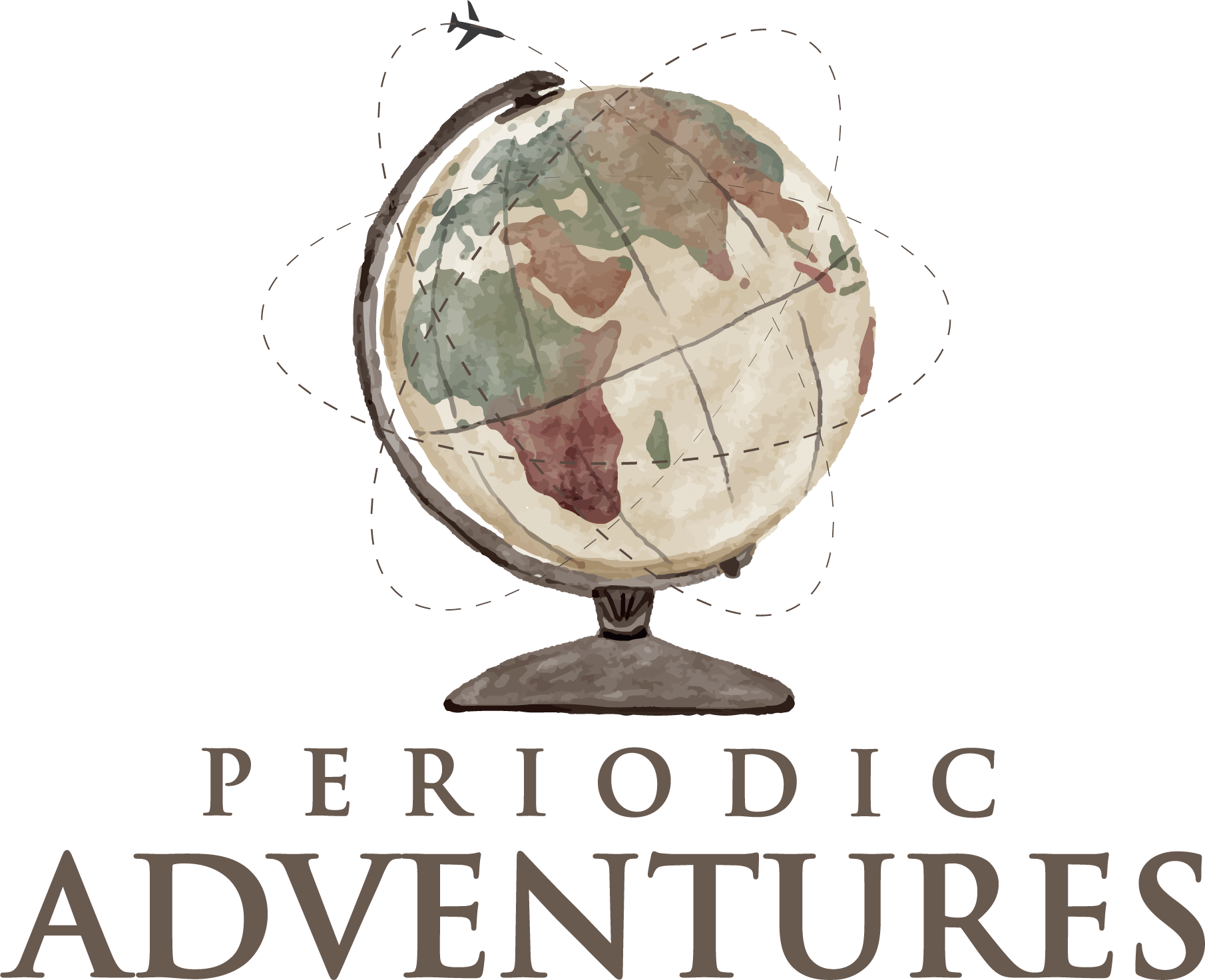

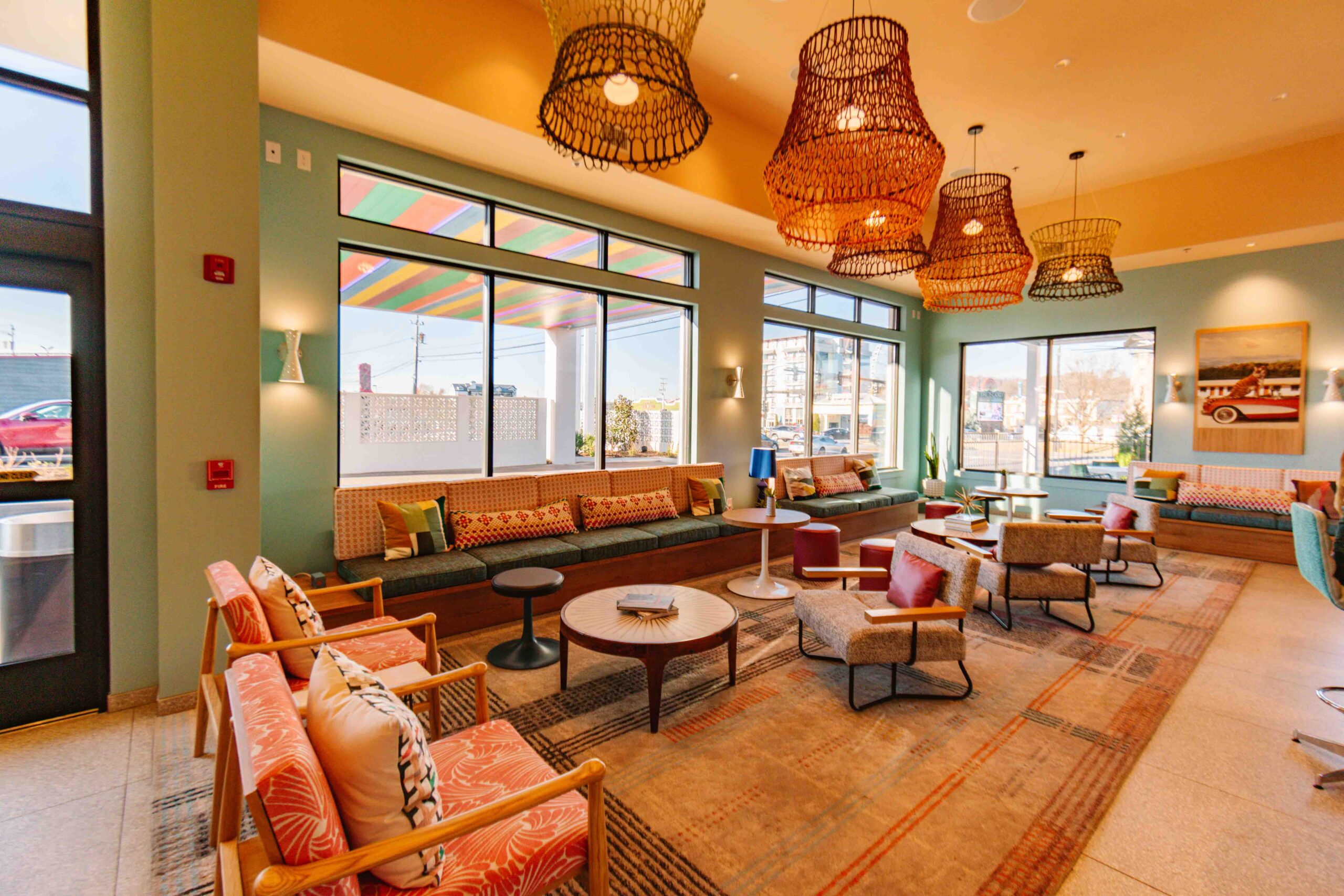

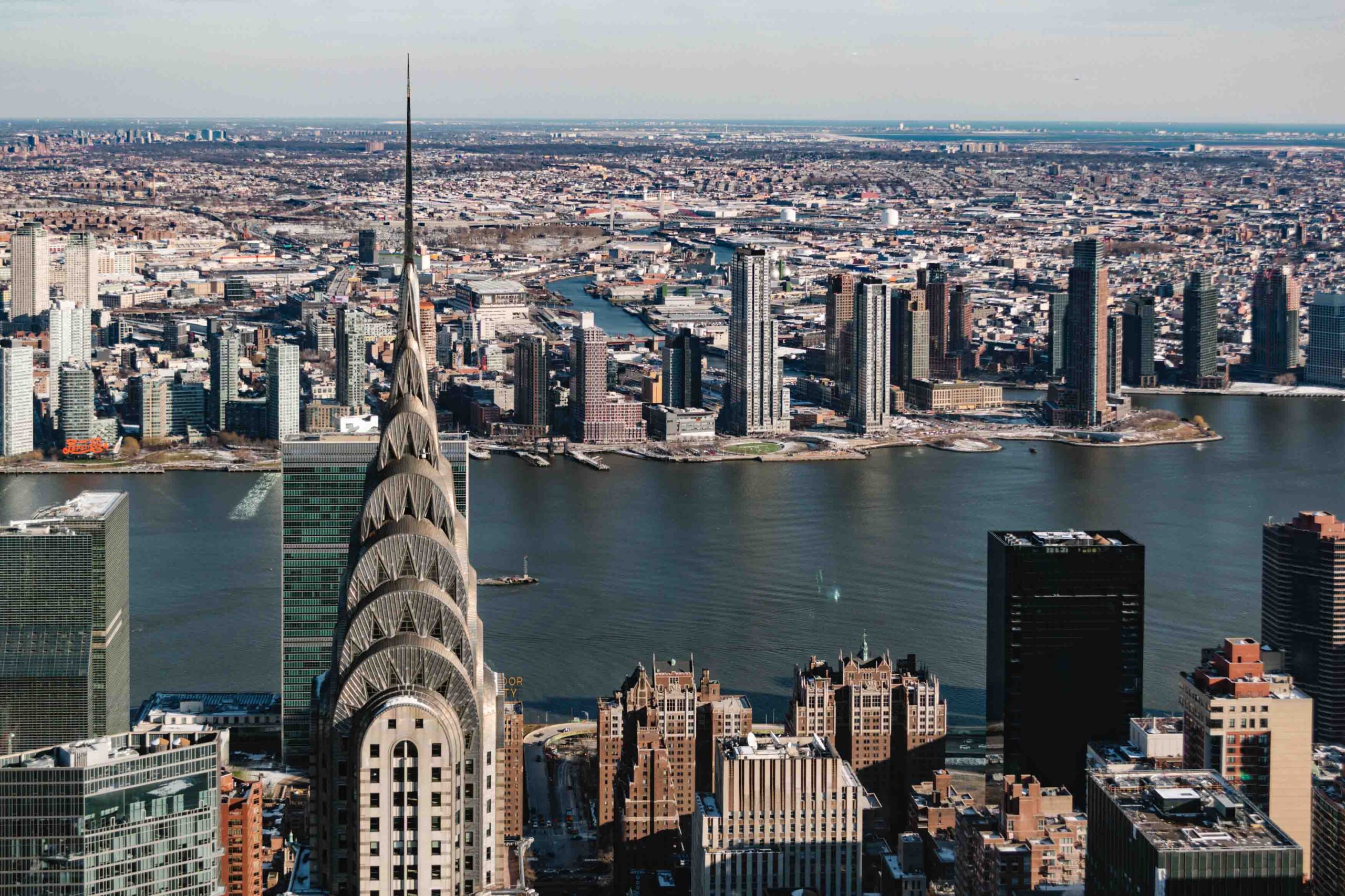


Bejal
This is such a thorough itinerary for three days and has definitley made me want to head back but this time, with your guide in hand. Thanks for compiling such a fab guide.
Alanna
I’m so glad to help. Enjoy!